As you might expect, online sales increased hugely in 2020 compared to previous years, with 15.8% of sales now classed as distant sales which has over doubled in the last 6 years.
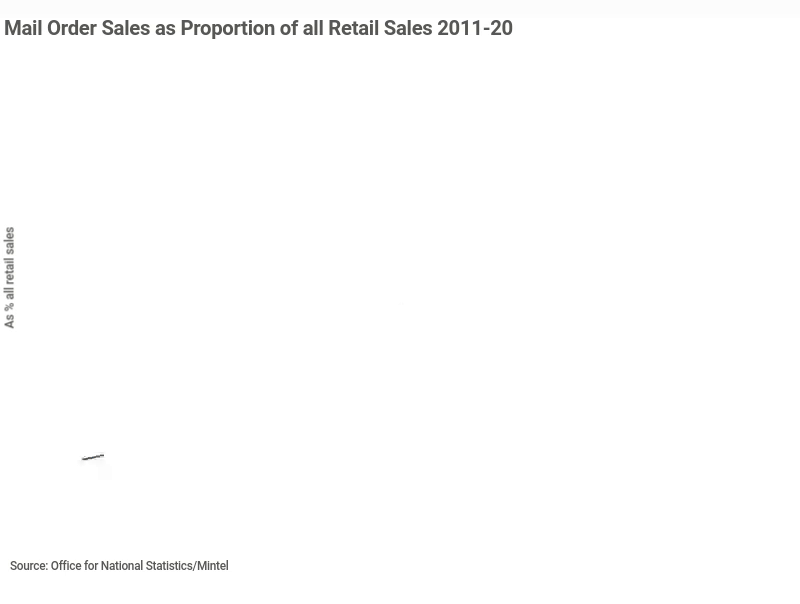
By analysing transactional data across online retailers throughout 2019 and 2020, we have been able to capture changes to purchasing behaviour across a wide number of sectors. Within each sector there are differences in behaviour among consumer types that we can see by using Mosaic groups to segment the population.
Let us dive into each of the sectors in turn for an overview of what we’ve been seeing.
Sector Summaries
Women’s Fashion
It was a slow start to 2020, with sales flat year-on-year until June. Strong growth in the last six months of 2020 saw all months July to December grow in excess of 22%, meaning total growth across the year of 18%.
When looking at Mosaic profiles however, there are marked differences in the increases in spending.
Focusing on women’s premium clothing brands, although starting from a smaller proportion of spending base, we saw a 22% increase in group A (City Prosperity – High status city dwellers). Group C (Country Living – Well-off owners in rural locations enjoying the benefits of country life) who had a larger allocation of spend, only saw a 7% increase. This indicates the increase in online shopping was more accentuated in urban / suburban households rather than more rural locations, who perhaps previously preferred trips to the high street. Over the next year as the high street reopens, it’ll be important to understand the preferences of these customers in terms of retention to your brand.
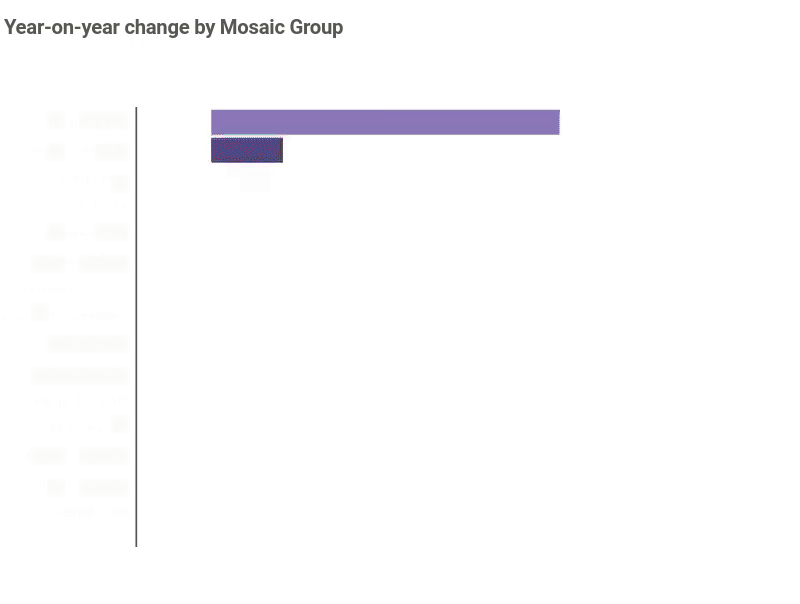
Men’s Fashion
Sales slumped post-lockdown with revenues down approximately 30% for April – June 2020. There was a year-on-year decline in total sales of -13%.
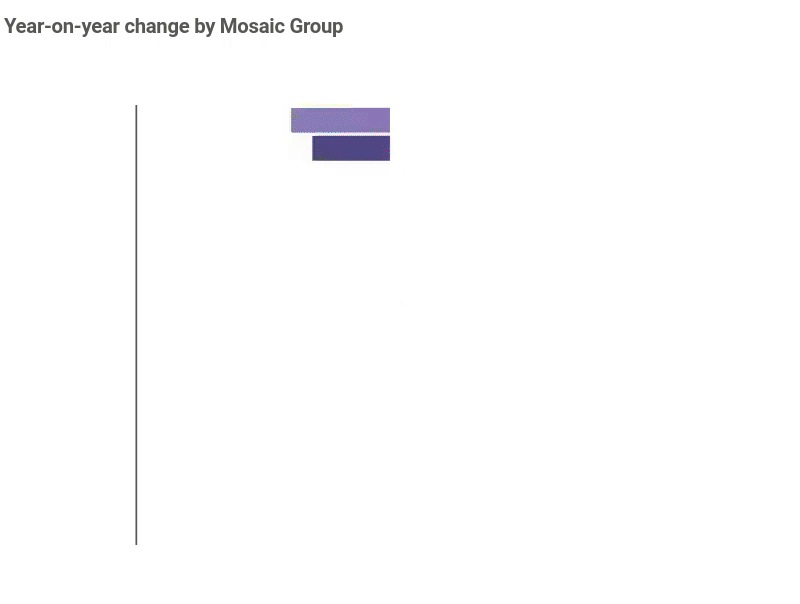
Interestingly, in a trend not mirrored across any of the other sectors, men’s fashion online saw a decrease across most of the groups, except for typically lower income groups (I-M), which saw an increase versus the previous year, albeit from very small proportion of the overall spend in this sector.
More significantly, the 45% decrease seen across groups A-C has seen a large shrinkage as these three groups account for nearly half of the category spend. Men’s fashion just hasn’t been a priority. The question will be, will we see an increase in demand post-lockdown both across home shopping and on the high street?
Gardening
In a similar trend to women’s fashion, sales were down in January and February 2020 (compared to the previous year) with accelerated growth as the first lockdown kicked in. March and April growth was close to 200% with overall category growth in 2020 at an average of 113% year on year across all Mosaic Groups. Eight groups saw triple digit growth, with significant growth in groups B (Prestige Positions – established families living upmarket lifestyles) & C (Country Living – well-off homeowners in rural locations) who account for 50% of the category spend. It will be interesting to see if this trend continues with a switch to online purchasing.
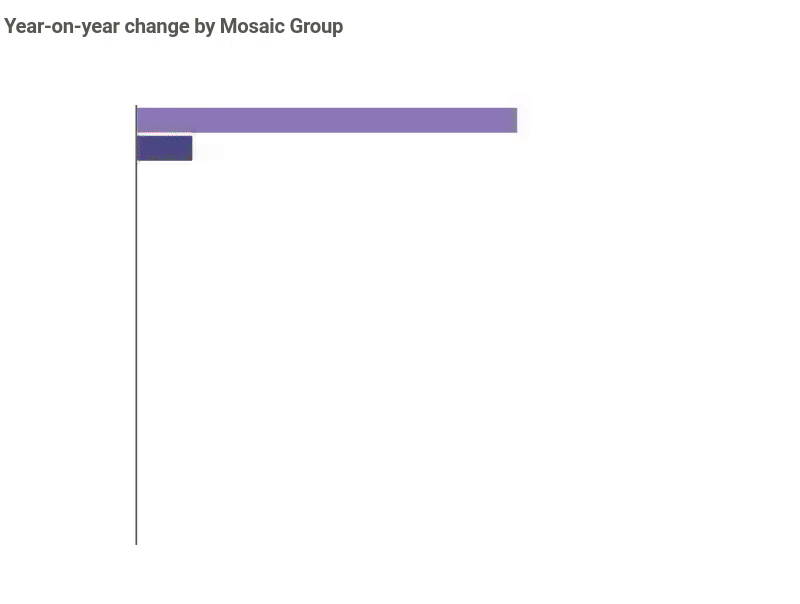
House and Home
As with some of the other sectors, sales growth remained flat between the months of January and May 2020 but increased significantly through the summer months as people invested in home and homeware as restrictions eased. The majority of spend is seen in four Mosaic Groups A (City Prosperity), B (Prestige Positions), C (Country Living) and G (Domestic Success). All of these groups saw significantly levels of growth from the previous year, indicating that those more affluent homeowners continued to invest in their home after the initial uncertainty of the first lockdown.
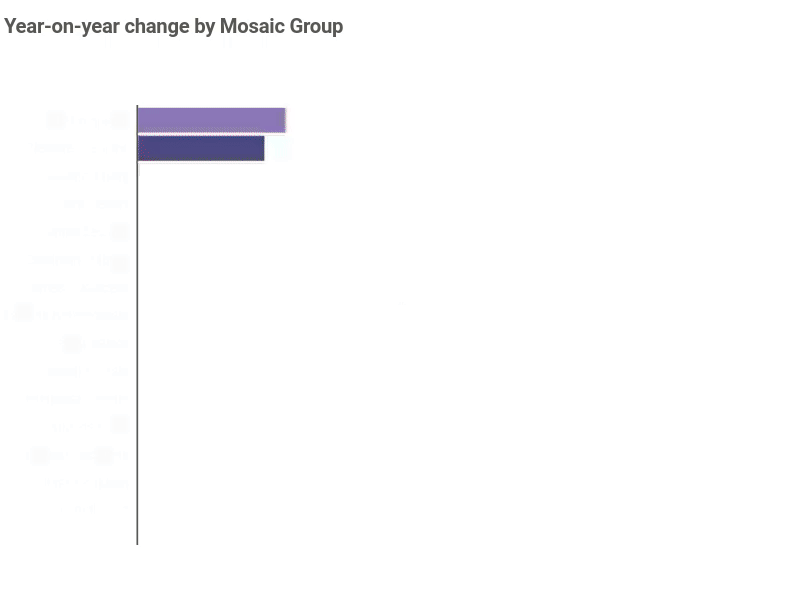
Impact by demography
Spend growth in the older population, was higher than their younger equivalents. Spend across the group aged 76+ (34% of 2020 revenue) increased by 51% compared to 37%, 31% and 43% for groups aged 18-45, 46-60 and 61-75 respectively. The increase in spend was primarily post-lockdown with only a 10% increase seen for those aged 76+ in the first 12 weeks of 2020.
Growth in lower affluent spenders outperformed those more affluent shoppers. Spend from individuals classified in the bottom 25% of the UK population (11% of 2020 revenue) increased by 65%, compared to 30% growth in the most affluent segment.
Consequently, the segment which saw the highest levels of growth in 2020, were low affluent individuals aged 76+ @ 69% which accounted for 5.5% of spend, up from 4.6% in 2019, showing that even segments of the population that had never shopped online previously were converted to online shopping out of necessity. However, these trends may not continue as the high street reopens.
Implementing marketing strategies in line with consumers’ changes
With a shift in spend to online throughout the pandemic in most categories, it would be easy to think that this trend is equally distributed across the whole population. However, when you layer on consumer segmentation, the detail of which segments of the population have responded to changes becomes more interesting.
With the bulk of the spending power residing a small number of Mosaic groups, strategies to influence and manage these customers becomes an increasingly important part of competing in the online ecommerce world and beyond when lockdown ends and consumers have the choice of where and how they want to shop.
For more insights like these, or if you want to understand the Mosaic profiles of your customers, please get in touch.
